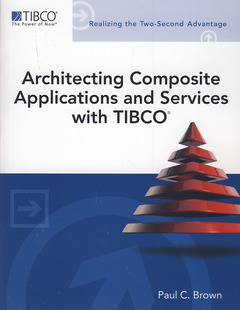Description
Architecting composite applications and services with TIBCO
Author: BROWN Paul C.
Language: English
Subjects for Architecting composite applications and services with TIBCO:
Approximative price 38.25 €
In Print (Delivery period: 12 days).
Add to cart474 p. · 17.8x23.2 cm · Paperback
Description
/li>Contents
/li>
Introduction
Part I: Getting Started
Chapter 1: ARC 701 Review
Chapter 2: The Payment Manager Example
Chapter 3: Concepts
Chapter 4: TIBCO Products
Part II: Designing Services
Chapter 5: Observable Behavior
Chapter 6: Service Specifications, Usage Contracts, and Architecture
Chapter 7: Namespaces
Chapter 8: Versioning
Chapter 9: Data Structures
Part III: Service Architecture Patterns
Chapter 10: Simple Service Architecture Patterns
Chapter 11: Load Distribution Patterns
Chapter 12: Data Patterns
Chapter 13: Composites
Part IV: Advanced Topics
Chapter 14: Benchmarking
Chapter 15: Interpreting Benchmarks
Chapter 16: Tuning
Chapter 17: Generic Fault Tolerance/ High Availability
Chapter 18: TIBCO Fault Tolerance
Chapter 19: Service Federation
Chapter 20: Putting it All Together

